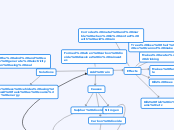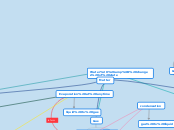Cycle
The first division between continents was made by ancient Greek navigators, who named them 'landmass, terra firma'.
Generally classified by convention rather than any strict criteria, nowadays seven regions are regarded as continents from a geopolitical point of view.
Fun Facts:
Random Facts
Every loaf of bread we eat takes
570 gallons of water from the water
cycle
Plants sweat, just like humans
We could be drinking the same water
dinosaurs drank
Our cycle of water can be much older
than you think
You can create your own
mini water cycle
Changes in climate mean changes in
the water cycle
The chemicals we use affect the
water cycle
Where is Earth's Water?
1.7% is in polar ice caps, glaciers,
and permanent snow
1.7% is in lakes, rivers, streams,
and soil
.001% is in water vapor in Earth's
atmosphere
96.5% of water is in the oceans
The water cycle is how all the water on the planet moves around the hydrosphere.
This is in evaporation, transpiration,
transportation, and condensation. This
means that one part of water could get
evaporated from the ocean, fall down as
rain and then run down the mountain back
to the ocean.
Water also leaves the surface of the Earth from transpiration (like sweat) from trees and vegetation. It then rises and condenses as clouds.
**For academic and personal knowledge**
Just because there's precipitation, doesn't mean it's rain.
Water Cycle Misconceptions
When water boils or evaporates, it disappears or goes straight into the clouds.
Reality: Boiling water or water left in an open container evaporates, changing from liquid to gas. The gas escaping from boiling water is water vapor. When vapor condenses in the air it is visible as tiny water droplets.
Water evaporates from only lakes and oceans.
Reality: Water can evaporate from plants, animals, puddles, and the ground in addition to bodies of water.
The water cycle involves freezing
and melting water.
Reality: The water cycle involved liquid water being evaporated, water vapor condensing to for rain or snow in the clouds, which falls to the earth as precipitation.
source used: https://www.nwrfc.noaa.gov/info/water_cycle/hydrology.html
Cycles give the world structure and consistency.
Water Cycle
North America has five time zones and it is the only continent with every type of climate.
North America was named after the explorer Amerigo Vespucci and is also known as the 'New World'.
The world's largest sugar exporter among the seven continents - Cuba - also called the 'sugar bowl of the world' is located here.
Storage
Water stored in the atmosphere can be moved relatively quickly from one part of the planet to another part of the planet. The type of storage that occurs on the land surface and under the ground largely depend on the geologic features related to the types of soil and the types of rocks present at the storage locations. Storage occurs as surface storage in oceans, lakes, reservoirs, and glaciers; underground storage occurs in the soil, in aquifers, and in the crevices of rock formations.
There are three basic locations of water storage that occur in the planetary water cycle. Water is stored in the atmosphere; water is stored on the surface of the earth, and water stored in the ground.
Runoff
Runoff is flow from a drainage basin or watershed that appears in surface streams. It generally consists of the flow that is unaffected by artificial diversions, storage or other works that society might have on or in a stream channel. The flow is made up partly of precipitation that falls directly on the stream , surface runoff that flows over the land surface and through channels, subsurface runoff that infiltrates the surface soils and moves laterally towards the stream, and groundwater runoff from deep percolation through the soil horizons. Part of the subsurface flow enters the stream quickly, while the remaining portion may take a longer period before joining the water in the stream. When each of the component flows enter the stream, they form the total runoff. The total runoff in the stream channels is called stream flow and it is generally regarded as direct runoff or base flow.
Transpiration
Transpiration is the biological process that occurs mostly in the day. Water inside of plants is transferred from the plant to the atmosphere as water vapor through numerous individual leave openings. Plants transpire to move nutrients to the upper portion of the plants and to cool the leaves exposed to the sun. Leaves undergoing rapid transiration can be significantly cooler than the surrounding air. Transpiration is greatly affected by the species of plants that are in the soil and it is strongly affected by the amount of light to which the plants are exposed. Water can be transpired freely by plants until a water deficit develops in the plant and it water-releasing cells (stomata) begin to close. Transpiration then continues at a must slower rate. Only a small portion of the water that plants absorb are retained in the plants.
Percolation
Percolation is the movement of water though the soil, and it's layers, by gravity and capillary forces. The prime moving force of groundwater is gravity. Water that is in the zone of aeration where air exists is called vadose water. Water that is in the zone of saturation is called groundwater. For all practical purposes, all groundwater originates as surface water. Once underground, the water is moved by gravity. The boundary that separates the vadose and the saturation zones is called the water table. Usually the direction of water movement is changed from downward and a horizontal component to the movement is added that is based on the geologic boundary conditions.
Infiltration
Infiltration is the physical process involving movement of water through the boundary area where the atmosphere interfaces with the soil. The surface phenomonon is governed by soil surface conditions. Water transfer is related to the porosity of the soil and the permeability of the soil profile. Typically, the infiltration rate depends on the puddling of the water at the soil surface by the impact of raindrops, the texture and structure of the soil, the initial soil moisture content, the decreasing water concentration as the water moves deeper into the soil filling of the pores in the soil matrices, changes in the soil composition, and to the swelling of the wetted soils that in turn close cracks in the soil.
Interception
Native Americans have lived along this river and its tributaries for thousands of years. Most were hunter-gatherers, but some formed agricultural societies.
Formed from thick layers of the river's silt deposits, this river's embayment is one of the most fertile regions of the United States; steamboats were widely used in the 19th and early 20th centuries to ship agricultural and industrial goods.
Name this river.
Interception is the process of interrupting the movement of water in the chain of transportation events leading to streams. The interception can take place by vegetal cover or depression storage in puddles and in land formations such as rills and furrows.
When rain first begins, the water striking leaves and other organic materials spreads over the surfaces in a thin layer or it collects at points or edges. When the maximum surface storage capability on the surface of the material is exceeded, the material stores additional water in growing drops along its edges. Eventually the weight of the drops exceed the surface tension and water falls to the ground. Wind and the impact of rain drops can also release the water from the organic material. The water layer on organic surfaces and the drops of water along the edges are also freely exposed to evaporation.
Precipitation
The specialty of some animals is they are found only in a particular region and nowhere else in the world. North America is home to many of such amazing animals.
Name at least 6.
Precipitation is the process that occurs when any and all forms of water particles fall from the atmosphere and reach the ground. There are two sub- processes that cause clouds to release precipitation, the coalescence process and the ice- crystal process. As water drops reach a critical size, the drop is exposed to gravity and frictional drag. A falling drop leaves a turbulent wake behind which allows smaller drops to fall faster and to be overtaken to join and combine with the lead drop. The other sub-process that can occur is the ice-crystal formation process. It ocurrs when ice develops in cold clouds or in cloud formations high in the atmosphere where freezing temperatures occur. When nearby water droplets approach the crystals some droplets evaporate and condense on the crystals. The crystals grow to a critical size and drop as snow or ice pellets. Sometimes, as the pellets fall through lower elevation air, they melt and change into raindrops.
Rain
Hail
Snow
Sleet
Condensation
The world's largest freshwater lake by surface area and the third-largest freshwater lake by volume can be found here. It provides a route for the transportation of iron ore, as well as grain and other mined and manufactured materials.
Large cargo vessels called lake freighters, as well as smaller ocean-going freighters, transport these commodities across this lake.
Name this lake.
Condensation is the process by which water vapor changes it's physical state from a vapor, most commonly, to a liquid. Water vapor condenses onto small airborne particles to form dew, fog, or clouds. The most active particles that form clouds are sea salts, atmospheric ions caused by lightning,and combustion products containing sulfurous and nitrous acids. Condensation is brought about by cooling of the air or by increasing the amount of vapor in the air to its saturation point. When water vapor condenses back into a liquid state, the same large amount of heat ( 600 calories of energy per gram) that was needed to make it a vapor is released to the environment.
Evaporation
There are 23 countries that make up North America.
Name as many of you can! Don't forget about their capitals.
Typically, solar radiation and other factors such as
air temperature, vapor pressure, wind, and atmospheric
pressure affect the amount of natural evaporation
that takes place in any geographic area.
Evaporation can occur on raindrops, and on free
water surfaces such as seas and lakes. It can
even occur from water settled on vegetation,
soil, rocks and snow. There is also evaporation
caused by human activities. Heated buildings
experience evaporation of water settled on its surfaces.
Evaporated moisture is lifted into the atmosphere from the
ocean, land surfaces, and water bodies as water vapor.
Some vapor always exists in the atmosphere.









